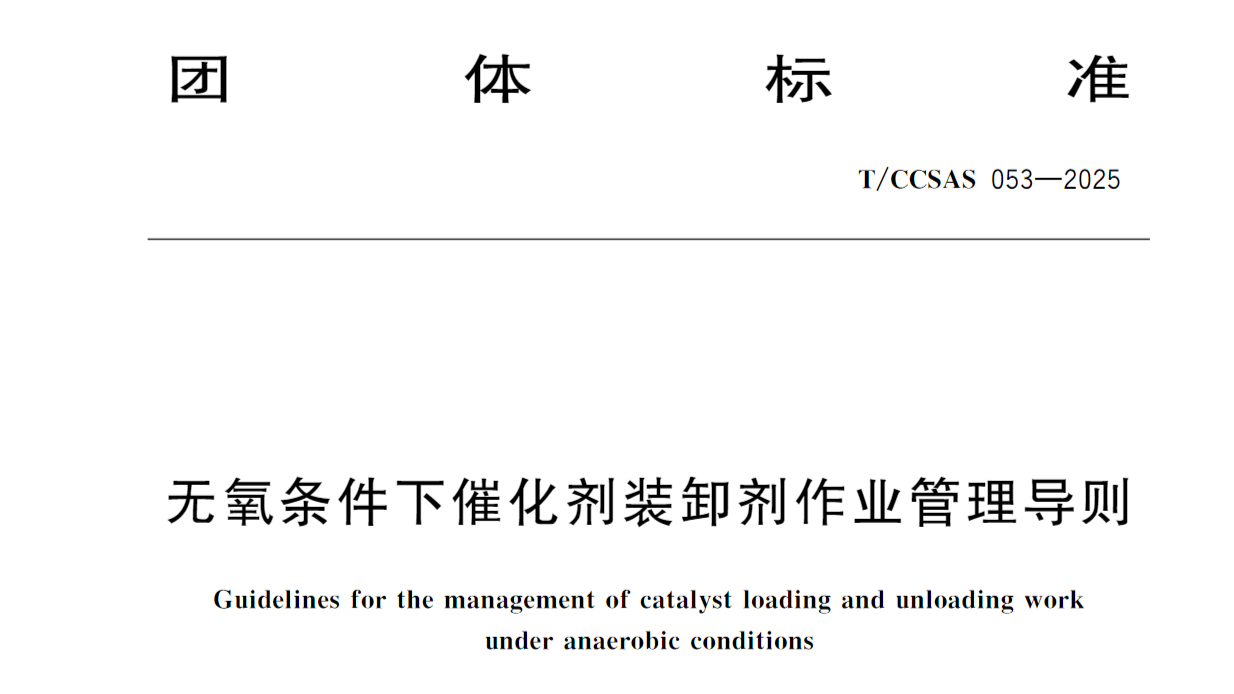“Guidelines for the Management of Catalyst Loading and Unloading Work under Anaerobic Conditions ”Has Been Released and Implemented
Led by the China Chemical Safety Association (CCSA), PetroChina Dushanzi Petrochemical Branch and PetroChina Safety and Environmental Protection Research Institute compiled the group standard “Guidelines for the management of catalyst loading and unloading work under anaerobic conditions” (T/CCSAS 053-2025), which was released and implemented on March 3rd. This standard is the only standard specification for risk control of oxygen-free operation in China.
The standard contains 7 chapters and 7 appendices, stipulating the basic requirements for catalyst loading and unloading operations under oxygen-free conditions, as well as the requirements for the implementation process, accident emergency rescue, training and auditing. Among them, basic requirements in Chapter 4 specifies the overall safety risk control of oxygen-free operation. Implementation process in Chapter 5 stresses the determination of oxygen-free operation area, hazard identification and risk control measures, compilation of oxygen-free operation program, program review and briefing, program and measure implementation, process control, and operation closure. This part specifically describes the control requirements of each key risk point; Emergency rescue in Chapter 6 emphasizes the key points of the emergency response to oxygen-free operation. Training and auditing in Chapter 7 allows companies to train personnel to improve skills of risk control in oxygen-free operation. The 7 appendices give specific examples for reference of companies.
In the production process of chemical companies, due to the material features or process technology limitations, sometimes it is impossible to realize aerobic operation or mechanical operation, thus oxygen-free operation is needed. At present, oxygen-free work in the industry is mainly concentrated in the reactor catalyst loading and unloading of hydrogenation and other devices. The oxygen-free operation is considered high-risk, and a number of accidents have occurred.
In order to effectively control the safety risk of oxygen-free operation , the standard drafting team conducted on-site field survey and risk identification for many companies that have engaged in oxygen-free operation, and sorted out the best practices of oxygen-free operation and typical accident cases in the industry, and compiled the standard based on opinions that are widely solicited.
